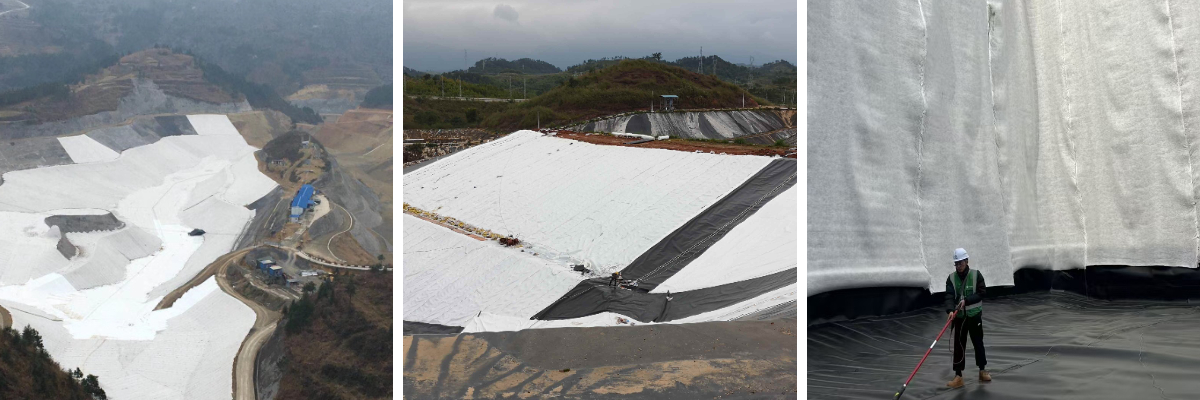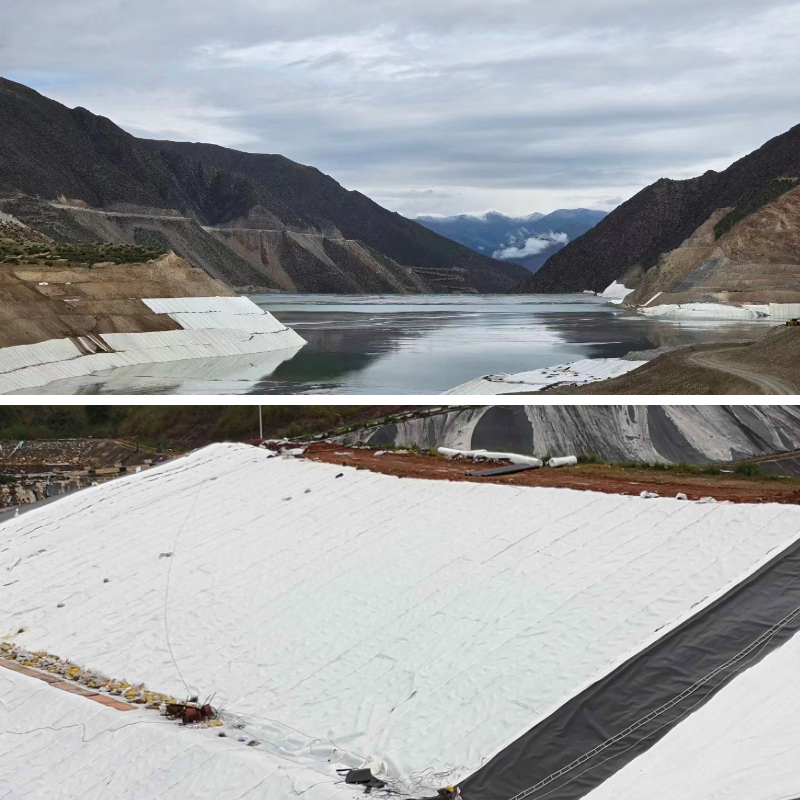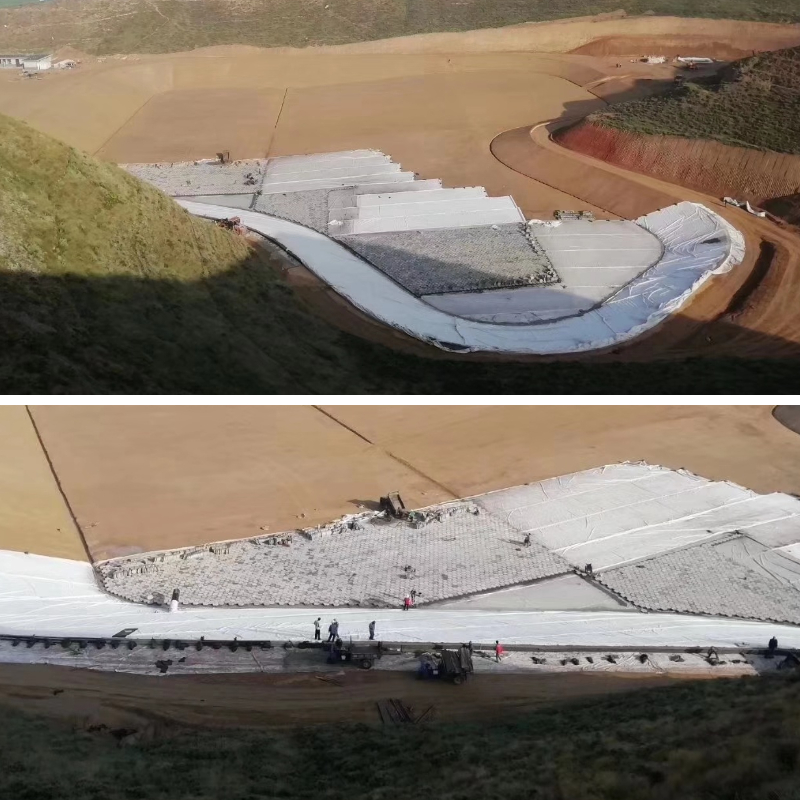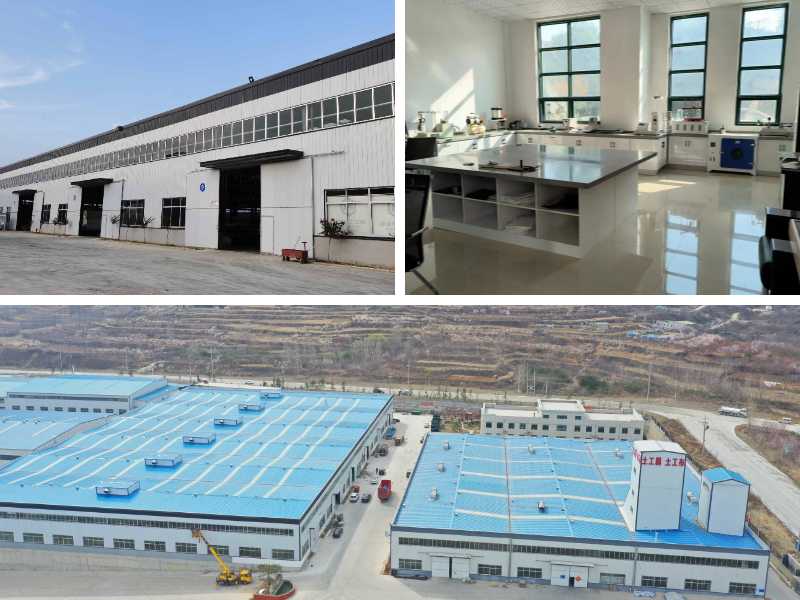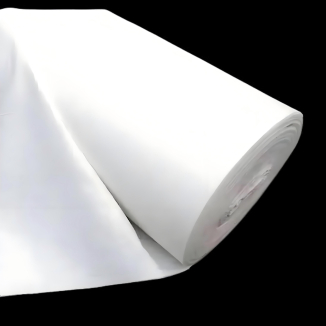Geotextile 90g m2
1. Strengthening the structure has a good effect:It can disperse engineering loads, reduce settlement and cracks of roadbeds and dams, and extend their service life.
2. Diverse and practical functions:Integrating reinforcement, isolation, filtration, and drainage, it can separate different materials and provide permeable soil retention to meet various engineering needs.
3. Strong environmental resistance:Resistant to high and low temperatures (-40 ℃ to 80 ℃), UV and corrosion, and can be used for more than 10 years in harsh environments.
4. Construction saves money and effort:Lightweight and easy to lay, three times more efficient than traditional materials, 40% lower cost, and long-term maintenance cost savings.
Product Introduction
1.Basic attributes
Geotextile 90g m2 is made of polymer synthetic fibers such as polyester (PET) and polypropylene (PP) as the core raw materials, with polyester fibers having a fracture strength of 5-8cN/dtex and outstanding weather resistance; Polypropylene fibers have stronger resistance to acid and alkali corrosion, and their performance is stable in environments with pH values ranging from 2 to 12. According to the process, it can be divided into three categories:
Weaving type: The warp and weft yarns are interwoven in plain or diagonal weave, with a tensile strength of 10-30kN/m, suitable for heavy-duty engineering;
Needle punched type: The fibers are wound into a net by mechanical needle punching, with a porosity of 30% -50% and excellent breathability;
Hot rolled type: The fiber is reinforced by high-temperature bonding, with a dense structure and a thickness deviation of ≤ 5%, suitable for anti-seepage auxiliary scenarios.
The product has a thickness of 1.0-4.0mm, a width of 2-6m (customizable splicing), a weight of 100-800g/㎡, and a permeability of 1 × 10 ⁻³ -1 × 10 ⁻¹ cm/s. It meets the standards of GB/T 17638-1998 "Geosynthetic Short Fiber Needle punched Non woven Geotextiles" and is suitable for all scenarios from garden planting to water conservancy projects.
2.Core functions
Structural reinforcement:
Fiber mesh disperses loads through the "reinforced soil friction" effect. In soft soil foundation highways, the use of crushed stone cushion layers can reduce settlement by 30% -50%. After application in a coastal highway project, the post construction settlement of the roadbed was controlled within 15cm, and the service life was extended to 15 years; In dam engineering, a composite shear system is formed by restructuring with the soil, which increases the shear strength by 20% -40%. Through this, a reservoir project in Yunnan has increased the slope safety factor from 1.1 to 1.35, effectively preventing landslides.
Material isolation:
Forming physical barriers at the interface of materials with different particle sizes, such as in railway track laying, by sandwiching geotextiles between the track bed and the foundation bed, can prevent fine-grained soil from entering the ballast gap, extending the track bed cleaning cycle from the traditional 5-8 years to over 15 years, and reducing the annual maintenance cost of a single kilometer line by 600000 yuan; In municipal pipeline backfilling projects, sand and gravel should be isolated from undisturbed soil to avoid settlement and fracture caused by soil disturbance around the pipeline.
Filter drainage:
By utilizing gradient pore structure to achieve "permeable but impermeable soil", soil particles larger than 0.075mm can be intercepted in hydraulic engineering, with a seepage rate of 5-20m/d. After application in a Yellow River embankment project, the seepage flow rate decreased from 0.5L/s to 0.08L/s, completely eliminating the risk of piping; In the drainage layer of the underground garage roof, rainwater can be quickly discharged, reducing the roof load by 20% and avoiding structural cracking.
3.Main features
Strong weather resistance: After adding 2% -5% carbon black anti-aging agent, the strength retention rate is ≥ 90% after xenon lamp aging test (equivalent to outdoor 5 years); No embrittlement at -40 ℃, no melting at 80 ℃, and the service life can still reach more than 10 years in Xinjiang saline alkali land (pH=10) and coastal mudflat (salt content 3%) and other environments.
Efficient construction: Each roll weighs 20-50kg and can be manually transported for laying. A team of two can lay 800-1200 square meters per day, which is three times more efficient than traditional sand and gravel isolation layers (which require mechanical paving); In complex terrains such as mountain terraces, swamps, and wetlands, quick splicing can be achieved through overlapping (width ≥ 20cm) or hot melt welding to adapt to slope construction with a gradient of ≤ 30 °.
Excellent economy: The material unit price is 2-8 yuan/square meter, which reduces the cost by 40% compared to traditional cement isolation layers (15-25 yuan/square meter); Taking the 10km second-class highway as an example, the initial investment saved by geotextile scheme is 2 million yuan, and the total life cycle (20 years) will save an additional cost of 8 million yuan due to the reduction of two major overhauls. At the same time, the amount of earth excavation will be reduced by 30% to reduce the disturbance to the ecological environment.
Product Parameters
project | metric | ||||||||||
Nominal strength/(kN/m) | |||||||||||
6 | 9 | 12 | 18 | 24 | 30 | 36 | 48 | 54 | |||
1 | Longitudinal and transverse tensile strength / (kN/m) ≥ | 6 | 9 | 12 | 18 | 24 | 30 | 36 | 48 | 54 | |
2 | Maximum elongation at maximum load in longitudinal and transverse directions/% | 30~80 | |||||||||
3 | CBR top penetration strength /kN ≥ | 0.9 | 1.6 | 1.9 | 2.9 | 3.9 | 5.3 | 6.4 | 7.9 | 8.5 | |
4 | Longitudinal and transverse tearing strength /kN | 0.15 | 0.22 | 0.29 | 0.43 | 0.57 | 0.71 | 0.83 | 1.1 | 1.25 | |
5 | Equivalent aperture O.90(O95)/mm | 0.05~0.30 | |||||||||
6 | Vertical permeability coefficient/(cm/s) | K× (10-¹~10-), where K=1.0~9.9 | |||||||||
7 | Width deviation rate /% ≥ | -0.5 | |||||||||
8 | Unit area mass deviation rate /% ≥ | -5 | |||||||||
9 | Thickness deviation rate /% ≥ | -10 | |||||||||
10 | Thickness coefficient of variation (CV)/% ≤ | 10 | |||||||||
11 | Dynamic perforation | Puncture hole diameter/mm ≤ | 37 | 33 | 27 | 20 | 17 | 14 | 11 | 9 | 7 |
12 | Longitudinal and transverse fracture strength (grab method)/kN ≥ | 0.3 | 0.5 | 0.7 | 1.1 | 1.4 | 1.9 | 2.4 | 3 | 3.5 | |
13 | Ultraviolet resistance (Xenon arc lamp method) | Longitudinal and transverse strength retention rate% ≥ | 70 | ||||||||
14 | Ultraviolet resistance (fluorescence UV lamp method) | Longitudinal and transverse strength retention rate% ≥ | 80 | ||||||||
Product Application
1.Road and Traffic Engineering
Roadbed reinforcement: In soft soil foundation sections, needle punched geotextiles are laid, combined with crushed stone cushion layers to disperse loads. Through this, a coastal highway project can control the post construction settlement of the roadbed within 15cm and extend its service life to 15 years.
Road crack prevention: Woven geotextile is sandwiched between the asphalt surface layer and the base layer to alleviate shrinkage cracks caused by temperature stress. After the renovation of a certain provincial road, the crack occurrence rate was reduced by 60%, and the maintenance period was extended from 2 years to 5 years.
Airport runway base: Hot rolled geotextile with high tensile strength (≥ 20kN/m) is used to isolate the foundation and sand layer, preventing fine particles from entering and ensuring the structural stability of the runway under high-frequency aircraft loads.
2.Water conservancy and waterway engineering
Dam anti-seepage assistance: Geotextile is laid between the upstream face of the dam and the anti-seepage membrane, which can filter seepage (permeability coefficient 1 × 10 ⁻ cm/s) and protect the membrane from being punctured by sharp soil particles. After application, the leakage rate of a reservoir in Yunnan has been reduced by 80%.
River ecological bank protection: Needle punched geotextile wraps around ecological bags to form flexible slopes, which provide growth substrates for aquatic plants while resisting water erosion (withstanding flow velocity of 1.5m/s). After river treatment in a certain city, the stability of the bank slope has been improved and biodiversity has increased by 30%.
Port yard foundation: Geotextiles are laid in layers in the backfill soil of the yard to isolate different particle sizes of fillers. After application, the bearing capacity of the foundation at a container terminal has been increased by 40%, meeting the requirements of heavy machinery operations.
3.Municipal and Environmental Engineering
Landfill site: 200g/㎡ needle punched geotextile is laid under the HDPE anti-seepage membrane to filter impurities in the leachate and prevent the membrane from being pierced by sharp objects from garbage. Through this, a landfill project has controlled the membrane damage rate below 0.5 ‰.
Backfilling of underground pipe gallery: Geotextile is used to isolate sand and gravel from undisturbed soil during backfilling on both sides of the pipe gallery, reducing the compressive stress of soil settlement on the pipe gallery. After the application of the comprehensive pipe gallery in a certain city, the risk of pipeline rupture has been reduced by 70%.
Artificial wetland filtration: 300g/㎡ geotextile is used as the bottom filter layer of the wetland bed to intercept suspended particles with a particle size of ≥ 0.1mm in sewage, improve microbial degradation efficiency, and increase COD removal rate by 15% in a certain domestic sewage treatment project.
4.Mining and Energy Engineering
Mine reclamation: Geotextile is laid on the surface of backfill soil in the mining area to prevent soil erosion, combined with vegetation planting technology. The soil water retention rate in the reclaimed area of a coal mine has increased by 50%, and the vegetation coverage rate has increased from 10% to 60% within one year.
Tailings dam protection: Woven geotextile is laid on the tailings dam body to enhance the shear strength of the dam body (by 25%), while filtering the tailings water. After the application of a certain gold mine project, the standard discharge rate of wastewater has increased from 70% to 95%.
5.Agriculture and Horticulture
Irrigation channel anti-seepage: After laying geotextile on the slope of the channel and covering it with concrete, the deformation of the channel caused by water flow erosion is reduced. The water utilization coefficient of a certain farmland irrigation project has been increased from 0.6 to 0.85.
Greenhouse planting bed: 100g/㎡ geotextile is used as the isolation layer of the planting bed to prevent substrate compaction and promote drainage. After potting succulent plants, the root rot rate is reduced by 40%.
Geotextiles have achieved targeted applications in fields such as roads, water conservancy, municipal engineering, mining, and agriculture due to their composite functions of reinforcement, isolation, and filtration. From controlling roadbed settlement to protecting embankments and preventing seepage, from improving sewage treatment efficiency to assisting in ecological restoration of mines, it has become an indispensable key material in modern engineering construction by adapting materials and specifications that meet different engineering requirements, ensuring structural safety, extending project life, and reducing maintenance costs while also considering ecological benefits.





